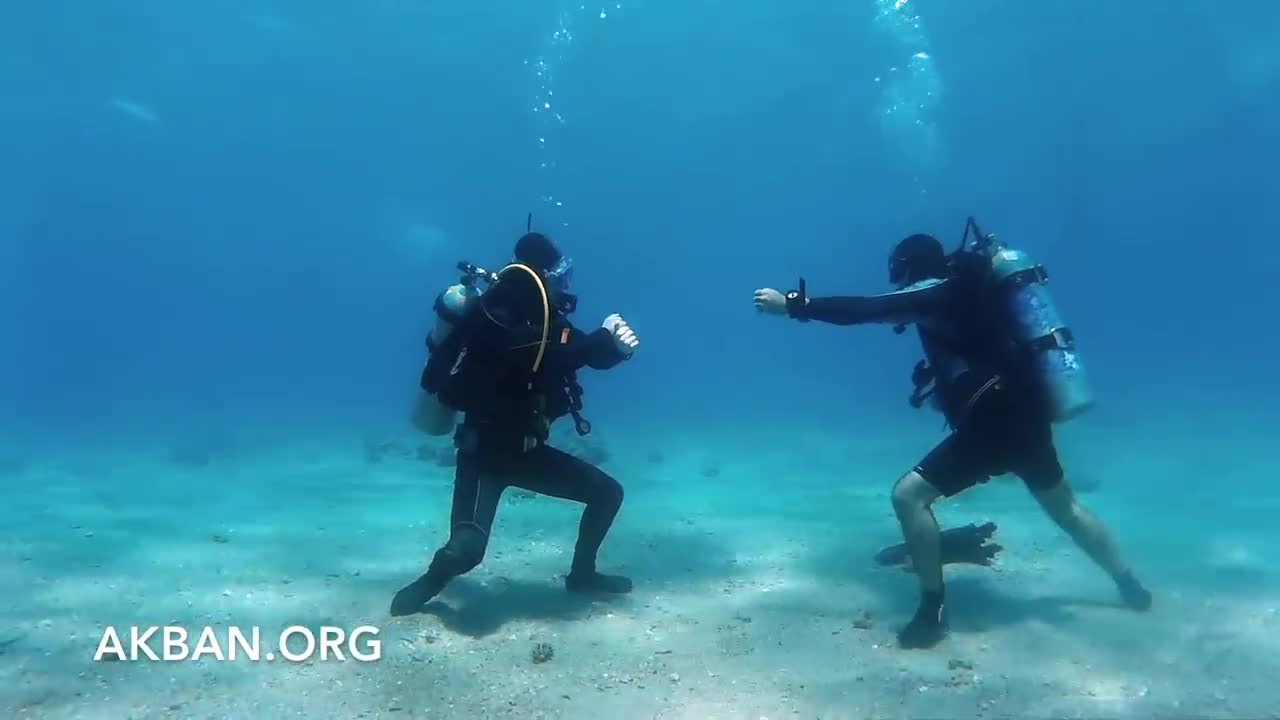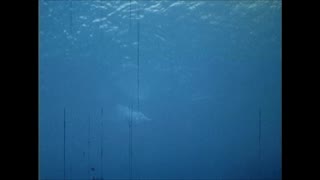Premium Only Content

Scuba Diving Underwater Ninjutsu - scuba diving kata
Scuba diving is a mode of underwater diving where the diver uses an apparatus which is completely independent of surface supply to breathe underwater.[1] The name "scuba", an acronym of "Self-Contained Underwater Breathing Apparatus", was first used by Christian J. Lambertsen in a patent submitted in 1952. Scuba divers carry their own source of breathing gas, usually compressed air,[2] allowing them greater independence and freedom of movement than surface-supplied divers, and longer underwater endurance than breath-hold divers.[1] Although the use of compressed air is common, a mixture of air and oxygen called enriched air or nitrox has become popular due to its benefit of reduced nitrogen intake during long or repetitive dives. Breathing gas diluted with helium may be used to reduce nitrogen narcosis.
Open circuit scuba systems discharge the breathing gas into the environment as it is exhaled, and consist of one or more diving cylinders containing breathing gas at high pressure which is supplied to the diver through a diving regulator. They may include additional cylinders for range extension, decompression gas or emergency breathing gas .[3] Closed-circuit or semi-closed circuit rebreather scuba systems allow recycling of exhaled gases. The volume of gas used is reduced compared to that of open circuit, so a smaller cylinder or cylinders may be used for an equivalent dive duration. Rebreathers extend the time spent underwater compared to open circuit for the same gas consumption; they produce fewer bubbles and less noise than open circuit scuba which makes them attractive to covert military divers to avoid detection, scientific divers to avoid disturbing marine animals, and media divers to avoid bubble interference.
-
 1:10
1:10
urmaddad
3 years ago $0.01 earned1960s Double Hose Regulator SCUBA Sled Underwater Diving Vintage Film
24 -
 1:09
1:09
YahyaGunder
3 years agoDiving underwater dream come true !!!
55 -
 1:28:21
1:28:21
Glenn Greenwald
7 hours agoRFK Jr. Hearing Reveals DC Pro-Pharma Consensus; Trump's Executive Order to Deport Student Protesters Criticizing Israel; Untangling DC Think Tank Funding & Influence | SYSTEM UPDATE #399
99.8K119 -
 1:23:44
1:23:44
Space Ice
8 hours agoSpace Ice & Redeye: Van Damme's The Quest: Pirates, Clowns, James Bond & Bloodsport
28.6K2 -
 59:57
59:57
The StoneZONE with Roger Stone
5 hours agoJ6 Martyr Enrique Tarrio Describes Inhumane Prison Conditions Ordered by Biden | The StoneZONE
25.5K1 -
 16:48
16:48
Tundra Tactical
5 hours ago $0.94 earnedAffordable Medical Gear From ACETAC SHOT Show 2025
21.1K1 -
 1:46:16
1:46:16
Redacted News
8 hours agoRFK CONFIRMATION: Kennedy goes to WAR with Big Pharma Democrats in Fiery Hearing | Redacted Live
201K399 -
 57:31
57:31
Candace Show Podcast
8 hours agoBREAKING! Taylor Swift Turns Against Blake Lively & Ryan Reynolds | Candace Ep 141
193K195 -
 1:04:59
1:04:59
Sarah Westall
5 hours agoRFK Jr Report, Constitution Suspended, War Time Procedures in Place, WHO Exit, DOD w/ Sasha Latypova
50.1K32 -
 1:56:37
1:56:37
Melonie Mac
9 hours agoGo Boom Live Ep 35!
48.5K13